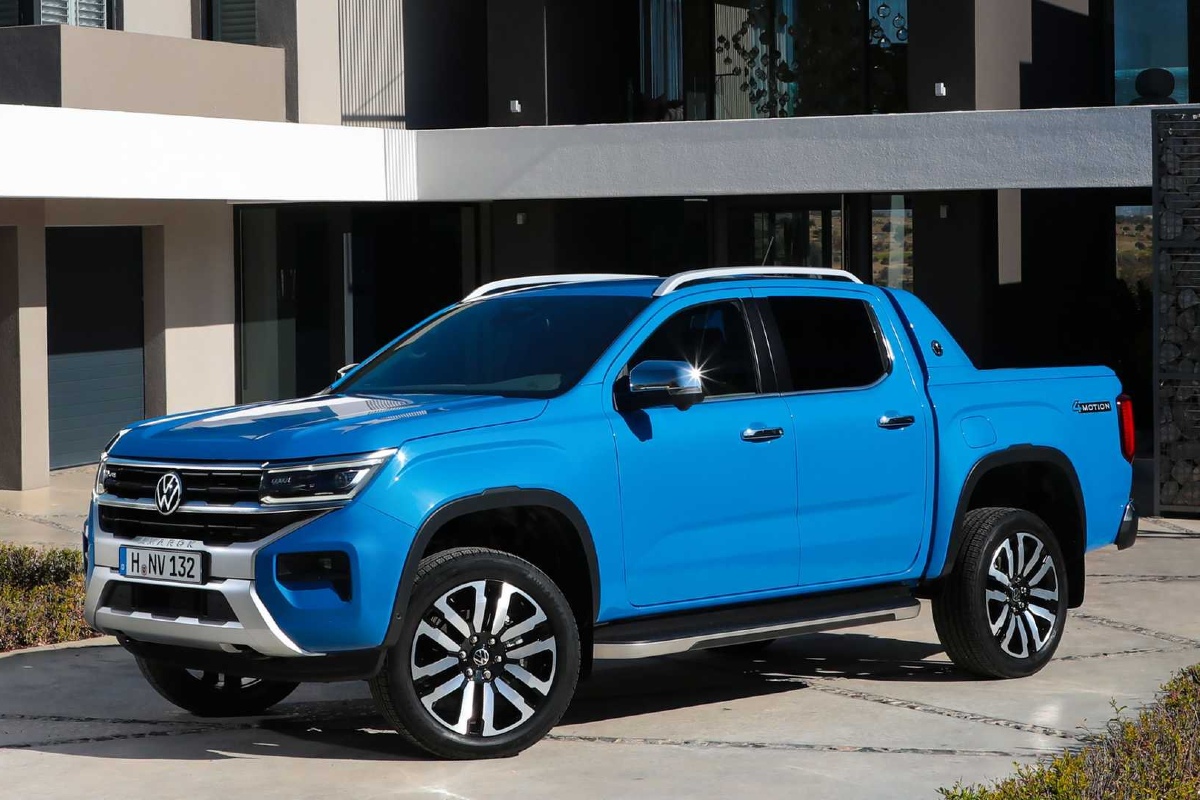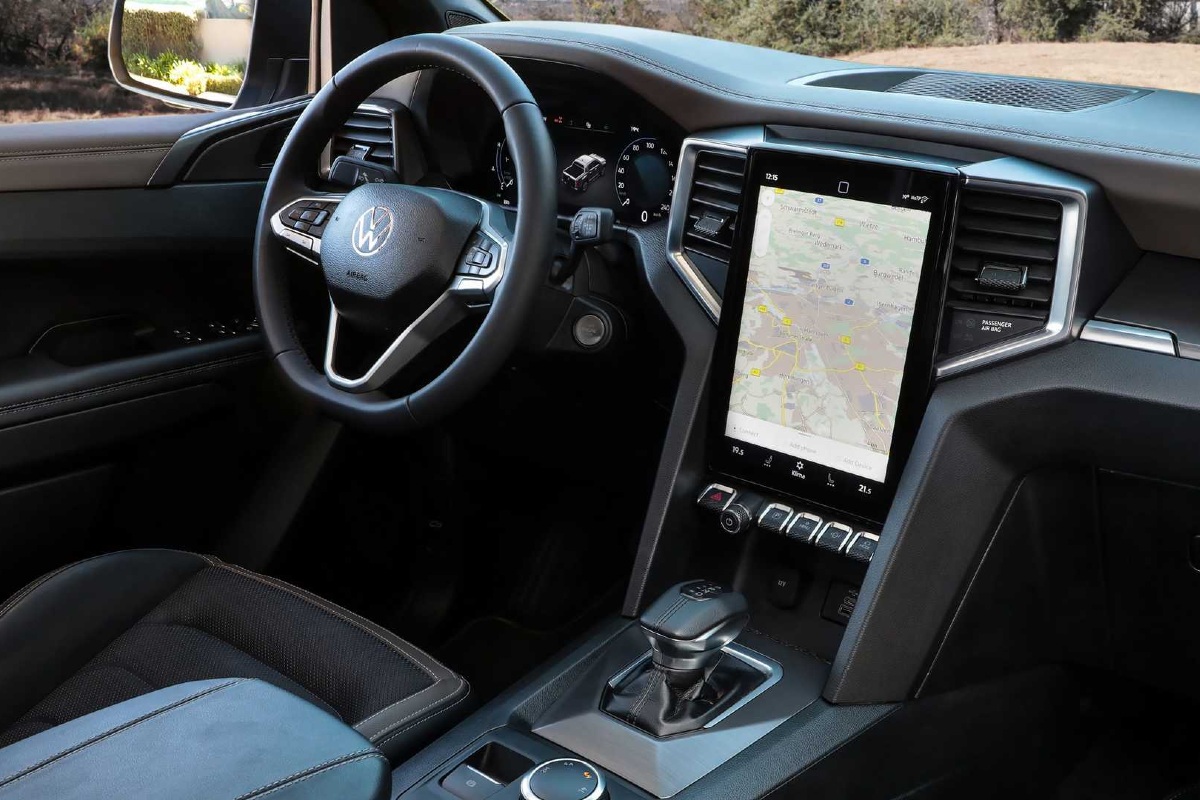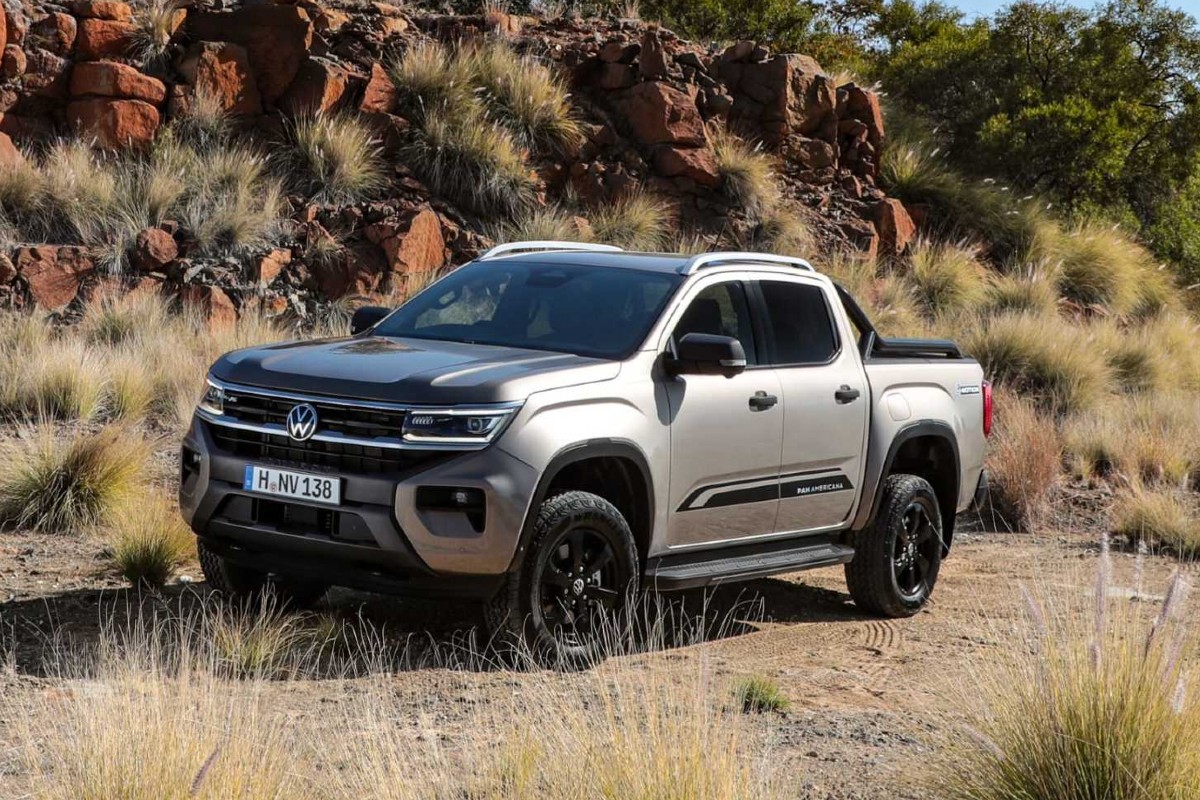The new Volkswagen Amarok and Ford Ranger utes are twins under the skin, developed in partnership. Which parts do they share – and where do they differ?
07. července 00, 08:2022
The new 2023 Volkswagen Amarok is «pure Volkswagen», company executives have assured, despite the ute sharing much of its structure and mechanicals with the new Ford Ranger.
As reported, the Volkswagen Amarok and Ford Ranger are products of an alliance between Volkswagen and Ford, sharing much of their floorpans, engines, transmissions and key technology and safety features – and largely differentiated only through exterior and interior styling.
Speaking to global media, VW executives debunked any suggestions its new ute is merely a rebadge of its Ford twin – but rather, that nearly every part visible to the customer on the Amarok is unique to Volkswagen.
«The glass, where you see through – there we said ‘OK, let’s do it common’. The outer mirrors and the grab [door] handles, [they are] really mass production [parts] – [so] we took it off the shelf,» one VW executive told media.
«But everything else… every tooling is unique. We have a pure Volkswagen.»
Beyond the bespoke exterior – which spans most parts, from the bonnet to the door stampings – the interior is unique to the Volkswagen, with the dashboard, seats, steering wheel and many controls designed by the German car maker.
While the Amarok shares its instrument and infotainment screens with the Ranger – and runs Ford’s Sync 4 multimedia system – the graphics are specific to Volkswagen, with a look that mirrors the brand’s latest models, including the Golf hatch and Caddy van.
But under the skin, the VW Amarok and Ford Ranger are closely related, sharing their 3270mm wheelbases, box-section ladder frames, four-cylinder and V6 engines, manual and automatic transmissions, and choice of two four-wheel-drive systems.
It’s worth noting the Volkswagen does receive its own steering tune for a unique feel – and the flagship Amarok Aventura also gains unique springs and dampers, designed to create a different feel on the road to any other Amarok or Ranger variant.
The Amarok’s list of advanced safety technologies and up-to-date tech features also mirror those of the Ranger (with a few specific exceptions) – though they are reskinned and rebranded where applicable to fall in line with the Volkswagen brand.
Volkswagen says the common elements were engineered and refined by both brands – with VW Commercial Vehicles board member for marketing, Lars Krause, explaining to pohon earlier this year the Volkswagen-Ford partnership was «a logical move for both sides».
«A lot of what Ford was planning for the Ranger was what we’d already been talking about internally at Volkswagen for the Amarok. Everyone agreed it was a good fit,» he said.
Executives elaborated overnight, explaining the joint-development arrangement ensured the Amarok would still feel like a Volkswagen – while, as previously reported, keeping costs down to make the entire project possible, as without Ford there would have been no new Amarok.
«We were looking when we started the project, who are our other competitors and and who brings the right ingredients – and we found a partner on eye level to really bring out a. joint product which is heading to the next level,» one VW Commercial Vehicles representative explained.
«And most important for us was the eye level, but as well that the platform which we developed together, [which] brings the right ingredients to make a unique new Amarok for us. And I think with this partner we found and took the right choice to . move forward».
Volkswagen is no stranger to platform sharing – though usually within its own Group, using its MQB small-car, MLB medium or large car, and MEB electric platforms to underpin dozens of vehicles from as many as five brands at once.
«At Volkswagen, we are very much used to having the same platform, and different cars on it. If you take for example, the ID.4 [electric SUV] and the ID. Buzz [electric van], everyone would obviously say these are different cars, but on the same [MEB electric] platform,» a VW executive told media.
«So what is what is the beauty of that idea? [It] is that we are getting down the cost through scale. But on the other hand, we can design our own vehicle. What is important for us is [that] . we want to have the look, the feel, the touch, the dynamics, of a Volkswagen, we want to have the design of a Volkswagen.
«We want to have the ecosystem of Volkswagen, we want to have the service of a Volkswagen. We want to have the haptics and the quality of a Volkswagen, and all of this is what we have designed into [the Amarok]. So it’s an all-different car on the same technical platform.»
«We [put in] a lot of effort . even in details like the HMI [human-machine interface, e.g. infotainment] that everything is pure Volkswagen, and we have our USP . [and] that clear product.»

After years of waiting and months of teasing Volkswagen has finally taken the covers off its highly-anticipated second-generation Amarok ute.
The new model has been developed in partnership with Ford, so it shares much of its mechanical DNA with the all-new Ranger. However, the German brand has worked hard to ensure the Amarok retains its own character.
Here are all the details you need to know about this new ute.
Design
While based on the same underpinnings as the Ranger, Volkswagen embedded a team of designers in Melbourne, where the Ford Australia-led program was based, to ensure enough visual difference.
As you can see from the images, the new model has the same proportions as the Ranger but a unique exterior that makes it look unmistakably a Volkswagen.
The new Amarok is longer (both overall and the wheelbase) and wider than before. The new model measures 5350mm long (+96mm), 1910mm wide (excluding mirrors) and 1888mm high with a wheelbase of 3270mm (+173mm).
Inside the Amarok has the same tablet-style touchscreen to control the infotainment system that appears in the Ford, however it gets its own unique Volkswagen switchgear and graphics to once again make sure it stands apart.
The extended wheelbase also means the cabin is more spacious than the out-going model.

Pohonné jednotky
Volkswagen will offer a range of Ford-supplied engines across the Amarok market, with specifications to vary depending on which market the ute is sold in.
The five engine and transmission combinations are:
2.0-litre four-cylinder single-turbo diesel – 110kW/350Nm – rear-wheel drive – five-speed manual transmission
2.0-litre four-cylinder single-turbo diesel – 125kW/405Nm – selectable all-wheel drive – six-speed manual transmission
2.0-litre four-cylinder twin-turbo diesel – 150kW or 154kW/500Nm – full-time four-wheel drive – six-speed manual or 10-speed automatic transmission
3.0-litre V6 turbo diesel – 177kW or 184kW/600Nm – full-time four-wheel drive – 10-speed automatic transmission
2.3-litre four-cylinder turbo petrol – 222kW/452Nm – full-time four-wheel drive – 10-speed automatic transmission
Volkswagen Australia has officially confirmed what powertrains will be available in Australia, but the most likely scenario would be the higher-grade variants of the 2.0-litre diesels and the V6 turbo-diesel.
Modelová řada
The German brand will offer a five model range for this new Amarok – Baseline, Life, Style and the range-topping PanAmerican and Aventura.
The PanAmericana will be a premium but off-road biased variant, while the Aventura is an on-road focused but well-equipped model designed to appeal to the growing number of luxury ute buyers.
While full details of these specifications haven’t been announced for Australia yet, we do know that the lower grade models will still get a 10-inch infotainment touchscreen while the higher-grades get a 12-inch version.
One major change for this new model is the addition of airbag protection for all occupants across all models. The out-going Amarok missed out on rear side airbags and it became a constant criticism of the ute throughout its lifecycle.

Walkinshaw partnership
Volkswagen Australia created a successful collaboration with Walkinshaw Automotive Group (WAG) to produce the limited-edition W580, W580S and W580X variants. This looks set to continue with this new-generation Amarok because Volkswagen at a global level doesn’t seem interested in going ‘Raptor hunting’.
The details of what the new Walkinshaw-fettled Amaroks will look like remain a mystery, but it’s likely to follow the same formula as before – the powertrain will remain untouched but WAG’s engineers and designers will upgrade the rest of the car.
There’s also no official word yet on whether Volkswagen will get access to the Ford 3.0-litre twin-turbo V6 that powers the new Ranger Raptor. It’s likely the blue oval will hang onto that for its exclusive use, at least in the short-term, which will mean the Walkinshaw Amarok’s will remain powered by the V6 turbo diesel.
Timing and pricing
This is one area that’s still ‘to be confirmed’ with final Australian specifications and pricing still a closely guarded secret.
What we do know is the Ford and Volkswagen models will be built entirely separately, with the Ranger manufactured in Thailand while the Amarok will be built in South Africa for this new model, rather than Argentina where the previous VW ute was produced.
We also know that the Amarok is due to arrive in the early months of 2023, approximately six-months behind the Ranger which launches officially next week (Torquecafe will be at the Ford Ranger launch so stay tuned for our first drive impressions soon).














